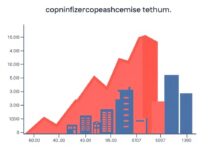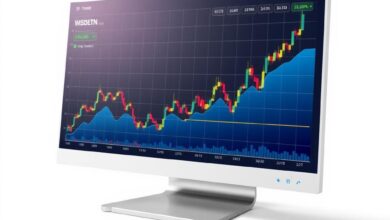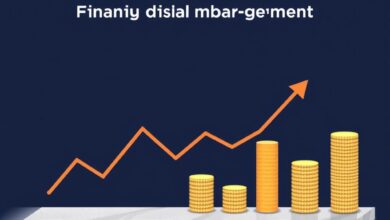Top 5 safe investments during economic uncertainty

Consider allocating a portion of your portfolio to government bonds, which are renowned for their stability and low risk profile. These instruments typically provide stable returns, especially during turbulent times, making them an ideal choice for safeguarding capital.
Real estate investment trusts (REITs) offer another avenue worth exploring. They allow investors to gain exposure to real estate markets without the complexities of direct ownership while often delivering reliable income through dividends.
If you’re seeking diversification, high-quality dividend stocks can be a solid addition. Companies with consistent earnings histories often maintain their payouts even in economic downturns, providing both income and potential appreciation.
Consider also investing in precious metals, such as gold or silver. Historically viewed as safe havens, these assets can hedge against inflation and market volatility, ensuring some level of security for your investments.
Lastly, municipal bonds present a favorable option due to their tax-exempt status and lower risk compared to corporate debt. This combination makes them appealing for conservative investors looking for steady returns amidst financial turmoil.
Government Bonds Overview
Allocate a portion of your portfolio to government bonds for low risk and stable returns. These instruments are backed by the issuing government, making them less susceptible to market volatility, especially in times of crisis.
Consider U.S. Treasury securities, which include bills, notes, and bonds. They offer varying maturities, allowing tailored financial planning based on your investment horizon. For instance, Treasury bills are short-term securities with maturities of one year or less, while Treasury bonds can mature in 30 years, providing options for both immediate liquidity needs and long-term growth.
Look into inflation-protected securities like TIPS (Treasury Inflation-Protected Securities). They adjust principal based on inflation rates, ensuring that returns keep pace with rising costs over time–an essential factor during economic downturns when purchasing power may decline.
For international diversification, explore foreign government bonds from stable economies. While they may present slight currency risks, the overall stability can enhance your portfolio’s resilience against domestic market fluctuations.
Regularly review interest rates and central bank policies affecting bond yields to maximize returns while minimizing exposure to price declines as rates rise. As conditions shift, rebalancing your allocation may be necessary to maintain an optimal risk-return profile.
Incorporating government bonds into your strategy provides not only protection but also a reliable income stream through periodic interest payments. This balance is particularly advantageous when preparing for unforeseen economic events.
Gold as a Safe Haven
Allocate a portion of your portfolio to gold, particularly in times of crisis. Historically, this precious metal has maintained its value and acted as a hedge against inflation and currency devaluation. In volatile markets, gold often outperforms other assets, making it a low-risk option for financial planning.
Consider purchasing physical gold or investing in exchange-traded funds (ETFs) that track its price. Both methods provide liquidity while safeguarding wealth during turbulent periods. Monitor global geopolitical tensions and economic indicators, as these factors can significantly influence gold prices.
Adjust your investment strategy by incorporating gold to balance risk exposure. A well-diversified portfolio with gold can mitigate losses from declining equities and bonds, ensuring stability when traditional investments falter. Aim for 5-10% of your total portfolio in gold to optimize long-term growth while minimizing risk during downturns.
Stay informed on market trends and consider consulting with financial advisors to fine-tune your approach. Gold’s historical resilience serves as a reminder that sometimes the best defense is a solid offense in asset allocation during uncertain times.
Real Estate Stability Factors
Focus on locations with strong rental demand and economic growth potential. Urban areas with diverse job markets typically offer better resilience during crises, ensuring consistent income streams for property owners.
Evaluate the condition of properties carefully. Well-maintained buildings in desirable neighborhoods tend to retain their value even when market fluctuations occur, providing stable returns over time. Regular maintenance and strategic upgrades can enhance appeal and profitability.
Diversify your portfolio by investing in various property types–residential, commercial, and industrial. Each sector reacts differently to economic shifts; thus, a mixed approach mitigates risks and enhances overall stability.
Consider properties that generate passive income through rental agreements. The cash flow from tenants can provide financial planning advantages, supporting ongoing expenses and contributing to long-term wealth accumulation.
Stay informed about local regulations and market trends. Understanding zoning laws and development plans can uncover opportunities for future appreciation or redevelopment, adding another layer of security to your investment strategy.
Diversifying with ETFs
Incorporating Exchange-Traded Funds (ETFs) into your portfolio can significantly mitigate risk during a crisis. By offering a blend of various assets, ETFs allow for enhanced diversification without requiring extensive capital investment.
- Broad Market Exposure: Choose ETFs that track major indices to gain exposure to a wide range of sectors, thus reducing vulnerability to sector-specific downturns.
- Low Expense Ratios: Many ETFs have lower fees compared to mutual funds, which helps in retaining more of your returns over time.
- Liquidity: ETFs trade like stocks on exchanges, providing the ability to react quickly to market shifts and adjust your financial planning accordingly.
- Dividend Yield: Select income-focused ETFs that invest in companies with solid dividend histories for stable returns even in volatile markets.
- Thematic Investments: Explore niche ETFs targeting specific trends or sectors, which can offer potential growth avenues while diversifying risk across multiple holdings.
To optimize your portfolio during challenging times, consistently review and adjust your ETF selections based on changing market conditions and personal financial goals. This proactive approach ensures resilience against fluctuations while striving for steady performance.







